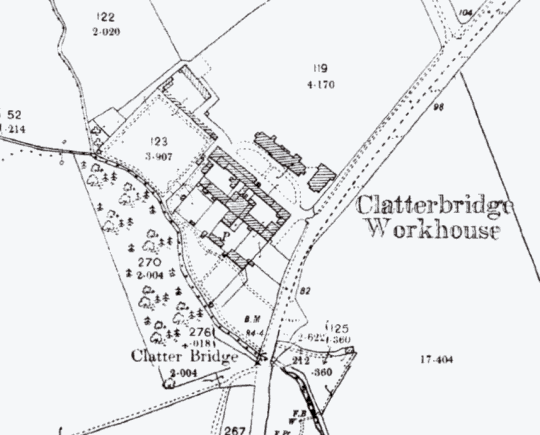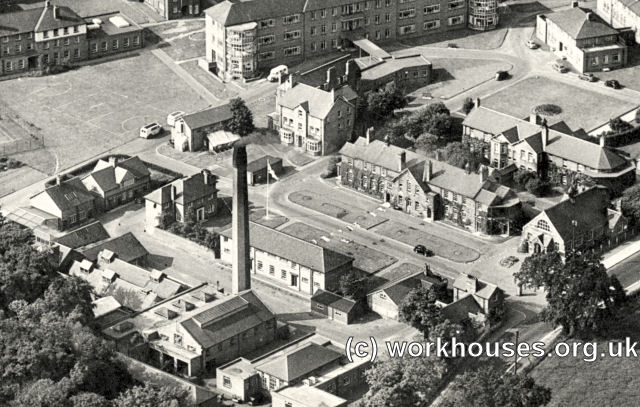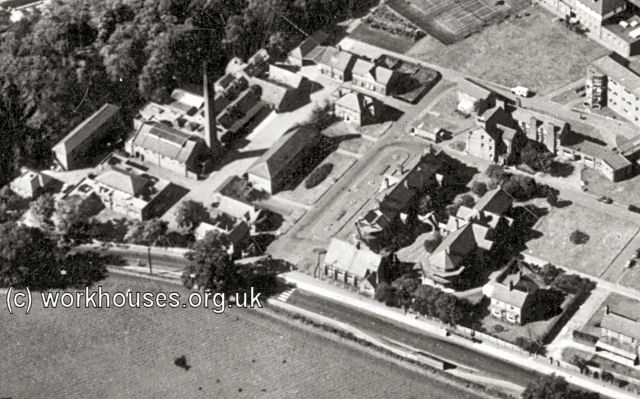Wirral, Cheshire
Up to 1834
No information.
After 1834
The Wirral [occasionally seen spelt Wirrall] Poor Law Union formally came into being on 16th May 1836. Its operation was overseen by an elected Board of Guardians, 57 in number, representing its 56 constituent parishes as listed below (figures in brackets indicate numbers of Guardians if more than one):
County of Chester
Parish of Bidstone: Birkenhead (2), Bidstone-with-Ford, Claughton-with-Grange, Moreton, Saughall Massey.
Parish of Bebbington: Higher Bebbington, Lower Bebbington, Poulton-cum-Spittle, Storeton, Tranmere.
Parish of Burton: Burton, Puddington.
Parish of Bromborrow: Bromborrow, Brimstage.
Parish of Eastham: Eastham, Horton, Nether Pool, Over Pool, Great Sutton, Little Sutton, Childen Thornton, Whitby.
Parish of Heswall: Gayton, Heswall-with-Oldfield.
Parish of Neston: Lidham, Leighton, Ness, Great Neston, Little Neston, Raby, Thornton Haugh, Willaston.
Parish of Wallazey [Wallasey]: Liscard, Poulton-cum-Seacomb, Wallazey.
Parish of West Kirby: Caldey, Frankley, Grange, Greasby, Hoose, Great Melose, Little Melose, Newton-with-Larton, West Kirby.
Parish of Woodchurch: Arrow, Barnston, Irby, Landican, Noctorum, Oxton, Pensby, Prenton, Thingwell, Woodchurch, Thurstaston, Upton or Overchurch.
Later Additions: Ellesmere Port (1911), Hoylake cum West Kirby (1894), Rock Ferry (1894-98).
The population falling within the Union at the 1831 census had been 17,342 with parishes ranging in size from Nether Pool (population 19) to Birkenhead (2,569). The average annual poor-rate expenditure for the period 1834-36 had been £3,674 or 4s.3d. per head of the population.
A new Wirral Union workhouse was erected in 1836-7 at Clatterbridge on the road from Birkenhead to Chester. It was designed by William Cole who was also the architect of the Winchester Union workhouse. In 1837, the Poor Law Commissioners authorised an expenditure of £2,500 on the building which was to accommodate 130 inmates. The building was financed by a loan from a clergyman, the Rev RM Feilden, at 4.5 per cent interest. The furniture for the establishment cost £64.8s.0d.
The site location and layout can be seen on the 1899 map below.

Wirral workhouse site, 1899.
There were early problems with the workhouse roof — gales caused damage because of the 'want of factability' (i.e. coping) on the gable ends. The original water supply to the building may have been from the nearby brook, but in 1839 an order was issued to sink a four-foot brick-ringed well to provide water. The workman was given a week to do the job and paid £2.5s.6d. There were originally no baths in the workhouse, such things likely to be quite foreign to the workhouse inmates at the time. However, the Board in 1840 'in consequence of the report of the Medical Officer, ordered that the Master and Matron of the House be instructed to take the children to bathe at Bromberrow'.
The workhouse was economically furnished. The new Board Room contained only an oil-cloth covered deal table, 12 feet long by four feet wide, and twelve strong rush-bottomed chairs. A number of double-beds were purchased and later on were occupied by three children each.
In 1861, parishes at the north of the Wirral separated to form the new Birkenhead Poor Law Union.
By 1899, a large infirmary block had been added at the north-east of the original workhouse, with a second block added to its rear by 1912.
After the ending of the workhouse system in 1930, Wirral workhouse was renamed Clatterbridge (County) General Hospital and under the National Health Service became Clatterbridge Hospital. The original workhouse building had been demolished by the 1950s. The other old blocks were demolished in 1997.

Workhouse section of Clatterbridge Hospital site, aerial view from the south, date unknown.

Workhouse section of Clatterbridge Hospital site, aerial view from the east, date unknown.
Children's Home
By the 1920s, the union was operating a number of children's scattered homes, with a receiving home for new admissions at 'Brynmore', 32 North Parade (also sometimes referred to as 'The Promenade'), Hoylake.
Staff
Inmates
Records
Note: many repositories impose a closure period of up to 100 years for records identifying individuals. Before travelling a long distance, always check that the records you want to consult will be available.
- Cheshire Archives and Local Studies, Cheshire Record Office, Duke Street, Chester, Cheshire CH1 1RL. Holdings include Guardians' minutes (1836-1891, with gaps); Workhouse committee minutes (1892-1926, with gaps); etc.
Bibliography
- Anonymous (1966) A Short History of the Clatterbridge Hospitals Central Wirral Hospital Management Committee
- Yeoman, JB (1965) Some Poor History and the Wirral Union Central Wirral Hospital Management Committee
Links
- None.
Unless otherwise indicated, this page () is copyright Peter Higginbotham. Contents may not be reproduced without permission.


